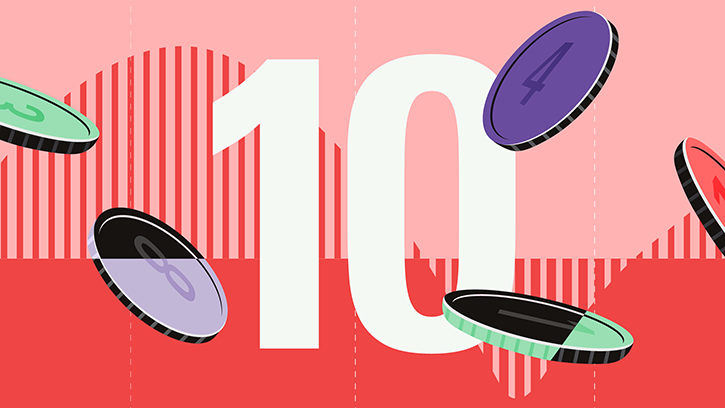If you believe investment managers, your portfolio won't be growing much during the next several years. GMO's forecast as of December 2015 shows 0%-2% returns for all assets except emerging market stocks and timber. Over the upcoming decade, Vanguard founder Jack Bogle expects 4%-6% gains on stocks and thus 3%-4% for multi-asset balanced portfolios – minus expenses, as he would point out.

Corporate pension funds are more pesimistic about investment returns than the state pension

Most institutional observers echo that sentiment. For example, looking out 20 years, McKinsey suggests 3% gains on balanced portfolios if economic growth remains sluggish, 5% if developed-markets economies get some spring in their step. Fixed-income prospects are even worse, it reports, "with average annual returns between 300 and 500 basis points" below their averages over the past three decades. The company sombrely concludes that the "golden era has now ended."
US pension funds, on the other hand, have a decidedly different view. The largest of the bunch, the California Public Employees' Retirement System, or CalPERS, estimates that its portfolio will earn 7.5% for the long term. The average U.S. public pension fund is slightly higher, at 8%.
U.S. funds are far more optimistic than their international counterparts. As shown below, U.S. estimates are well above those of the United Kingdom, which in turn are above those of Australia and Canada, which in turn are above those of Switzerland.

Adding to the confusion, in each of those countries apart from Switzerland, where 3.5% is the average for both universes, corporate pension plans cite lower expected returns. Even as Australia's public funds expect 6%, its private-sector plans forecast 3.4%. Similarly, U.K. corporate pension funds project their returns as being 160 basis points below those of the country's state pension funds. U.S. corporate figures are significantly lower, as well.
There's no obvious investment reason for such discrepancies. As public and private pension funds are each large, tax-sheltered, institutional entities that fulfil similar missions and that have broadly speaking similar investment portfolios, they should have similar expected returns within a given country. National differences should be minimal, too. These days, bond yields, interest rates, and risks are pretty much the same across developed markets.
There is an obvious political reason: The higher a pension fund's expected future returns, the lower its required funding, and the likelier that the fund will officially meet its stated obligations. Pension officials have many reasons to think happy thoughts. That incentive explains why pension-fund estimates tend to more generous than other forecasts, but it doesn't explain the differences among pension funds of various types and from various countries.
For that, we need to recognise that, in some aspects, investment analysis is something of a black art. There is much true science in the field, of course: Wall Street employs thousands of Ph.D.s to model bond and derivative prices, determine arbitrage opportunities, calculate trading costs, and so forth. Many investment tasks lend themselves to exact measurement. However, others resist such analysis.
The Valuation Problem
Chief among those is the exercise of forecasting asset-class returns. As investment historian Peter Bernstein enjoyed pointing out, almost no asset-class forecaster passed even the easiest test. Long-term U.S. bonds, carrying essentially no credit risk and a guaranteed payment schedule, looked to be a straightforward exercise. Yet for 30 years, from 1950 through 1980, investors continually overestimated long Treasury returns. Then, for the next three decades, they erred in the opposite direction.
The difficulty – and the reason Bogle's prediction is a range rather than a single number – lies with changes in valuation. Bond payments and corporate dividends are mostly known quantities. Economic and profit growth are less certain, but both tend to follow a fairly flat trend line, albeit with significant wobbles. Valuations, however, are another matter. They can rise or fall for much longer than just about anybody anticipates.
Which Forecast to Believe
I do not criticise CalPERS and its 7.5% return assumption. Plenty of others have done so. A few years back, Andy Kessler in The Wall Street Journal called CalPERS' calculation "fiction," adding that "Wall Street would laugh if the matter weren't so serious." Less diplomatically, Warren Buffett stated, "Pension assumptions that assume they will earn 8%, or something like that, when bonds are yielding what they are yielding now, that is crazy."
They are probably correct. Making 7.5% per year, even for a fund that has all the institutional advantages, will be a tall order indeed. Then again, many critics, Buffett included, made similar arguments two decades ago. At that time, my elders sagely informed me that my youth had been unusually fortunate. But the good times were over. By the mid-1990s, they said, "irrational exuberance" had pushed up stock prices to the point where future returns would disappoint. Still waiting.
My point? Predicting investment returns is largely guesswork. Some forecasters have pristine motives and a history of accuracy when talking about investment subjects. Other forecasters, not so much. I would give more weight to the first group's conjectures, but not that much more.
John Rekenthaler has been researching the fund industry since 1988. He is now a columnist for Morningstar.com and a member of Morningstar's investment research department. John is quick to point out that while Morningstar typically agrees with the views of the Rekenthaler Report, his views are his own.





























